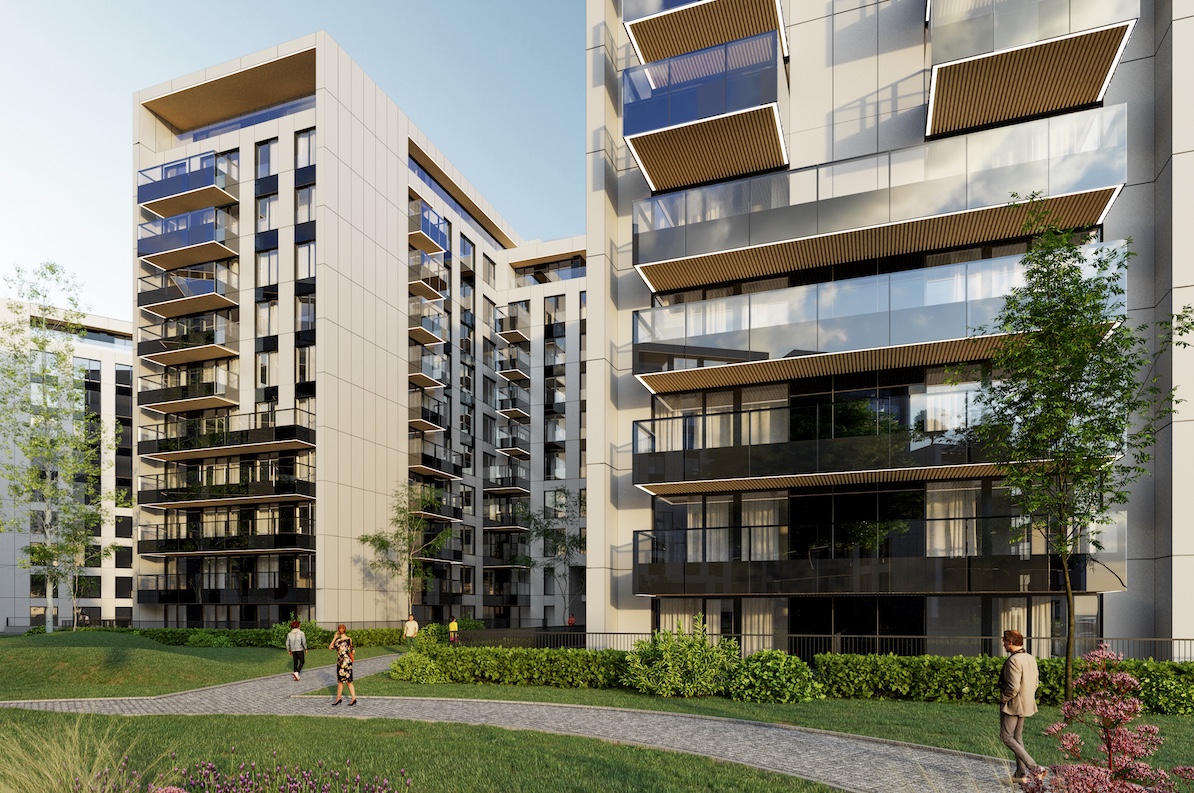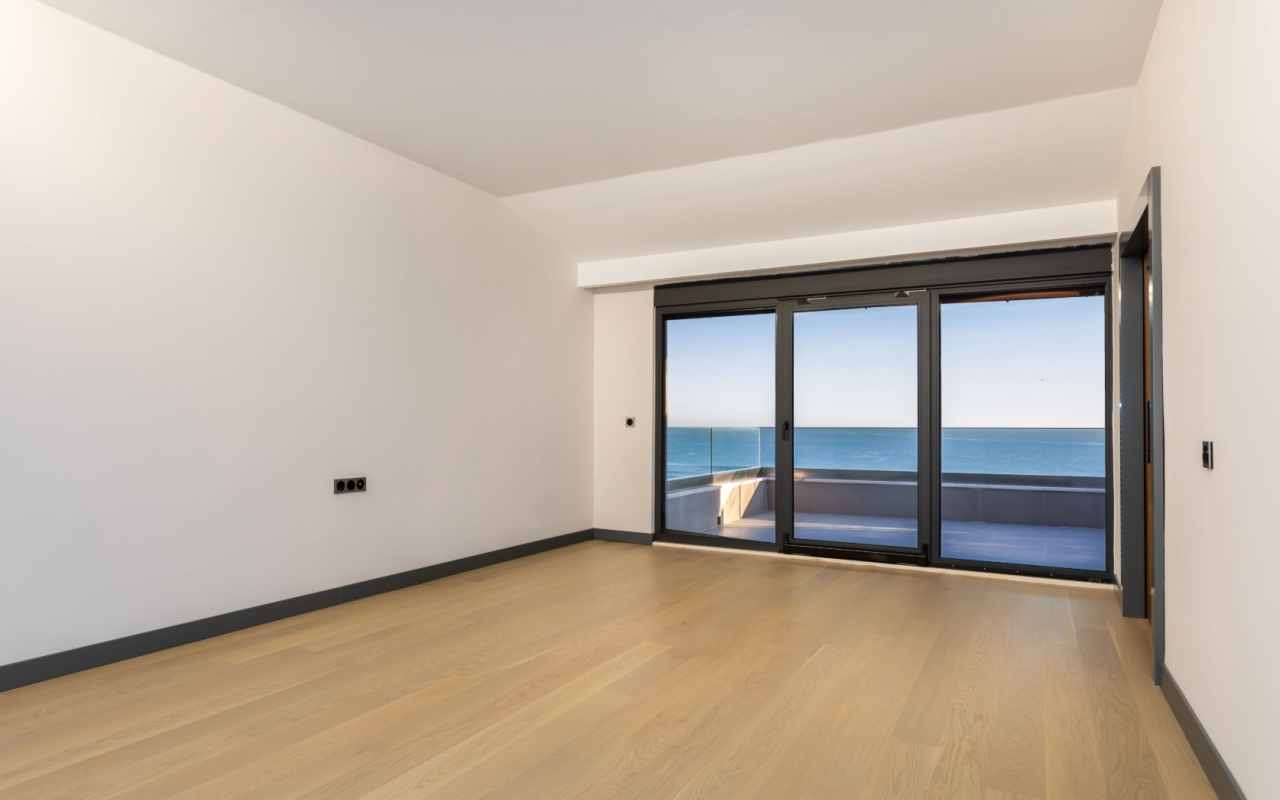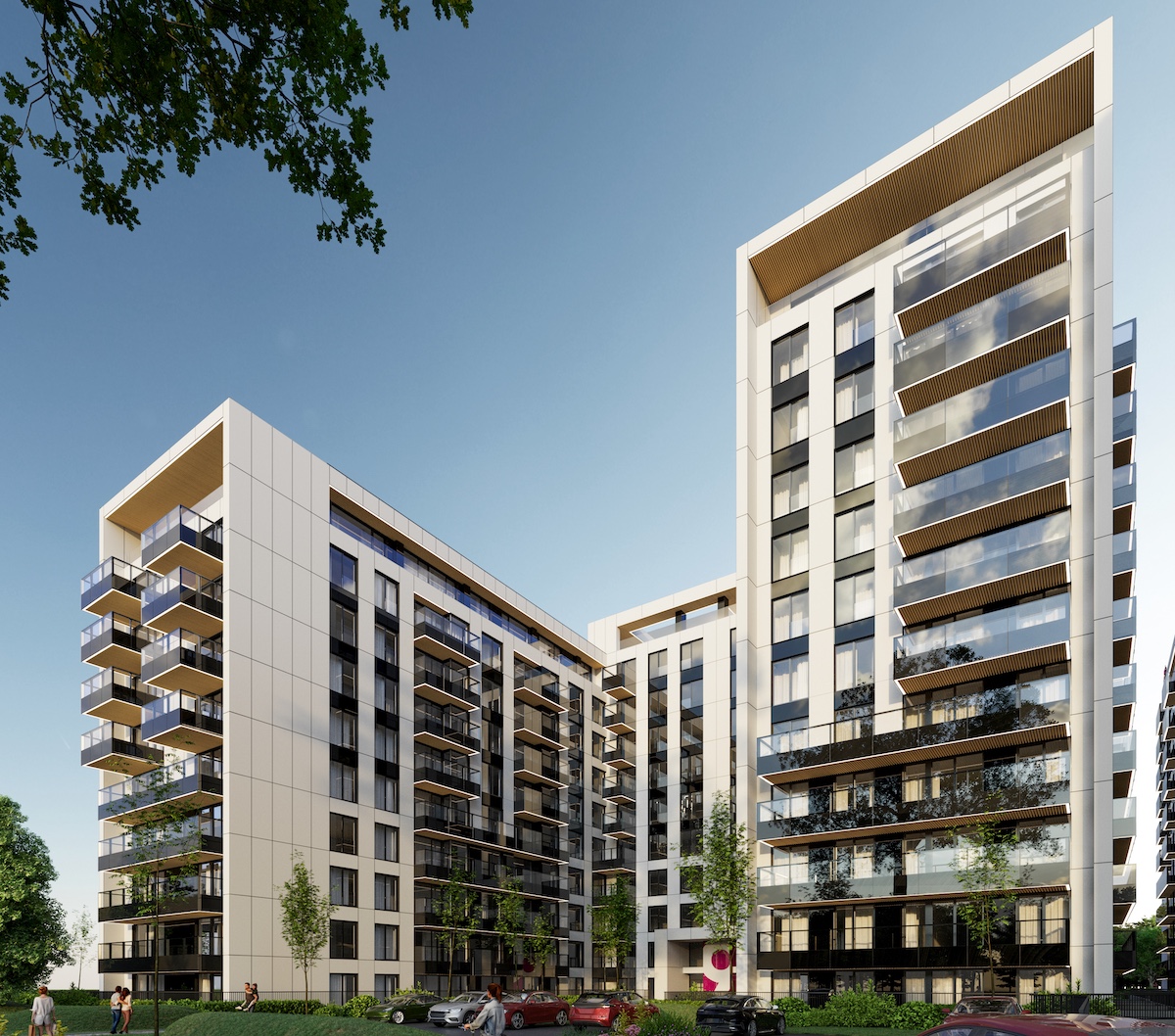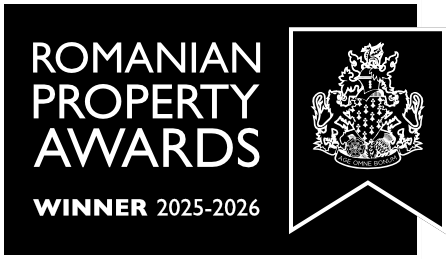Real estate investments are among the most popular and accessible ways to build a solid financial portfolio in Romania. Whether you’re just starting out or already have experience, understanding the local market and applying effective strategies can make the difference between a profitable investment and a risky one.
Have you ever wondered how to turn your savings into passive income or how to benefit from the rapid development of major cities? The answer might lie in real estate – but with a well-informed and carefully planned approach.
This guide offers a clear overview of the mechanisms of the Romanian real estate market and helps you make informed decisions. Whether you’re targeting rental apartments, development land, or more unique properties, the options are diverse and can be tailored to your objectives.
For example, if you are targeting high-yield investments in crowded urban areas, studio apartments can be an excellent choice. They are easy to rent, especially in university cities or business districts, offering smart layouts and modern design with low maintenance costs.
On the other hand, apartments with gardens attract families or tenants seeking a relaxed lifestyle close to nature, and are increasingly popular in new residential developments. Such properties can offer a competitive advantage, especially in the context of growing demand for living spaces with private green areas.
Regardless of the chosen option, the key to success remains a careful market analysis and a strategy tailored to your investment needs.
What is a Real Estate Investment?
A real estate investment means buying a property with the main goal of generating profit, either through renting or through value appreciation over time and resale. Unlike purchasing a home for personal use, real estate investments are focused on financial returns.
The real estate market offers many investment opportunities, from apartments and houses to commercial spaces and land. Each type of property has its own risk and return characteristics, requiring careful analysis of the real estate market before making a decision.
To succeed in real estate investments, you need to consider several factors. The location of the property influences rental demand and potential value appreciation. The technical condition of the property determines maintenance costs and its attractiveness to tenants. The local and national economic context affects prices and demand in the real estate market.
It is important to understand that real estate investments are not passive. They require time, attention, and resources for property management, finding and retaining tenants, making repairs, and complying with legal obligations. Many beginner investors underestimate these aspects, focusing only on the potential profit.
To succeed in real estate, you must understand the local real estate market well, set clear goals, and adopt a long-term strategy. Regular analysis will help you identify trends and adjust your strategy.
Analysis of the Real Estate Market in Romania
The Romanian real estate market has gone through several stages over the last two decades, from the boom before the 2008 crisis to the stabilisation and growth seen in recent years. To make good decisions in real estate investments, it is important to understand how the market functions and what influences it.
Currently, the Romanian real estate market shows high demand in major cities such as Bucharest, Cluj-Napoca, Timișoara, and Iași. This demand stems from economic growth, the development of the IT sector, government housing programmes, and population movement towards cities.

Several factors influence the real estate market. The policies of the National Bank of Romania, especially interest rates, affect access to mortgage loans. Government programmes such as ‘Prima Casă’ support demand, while urban planning rules and available land influence supply.
From an investment point of view, analysis shows that Romanians prefer:
- New or renovated apartments in central areas or with good public transport access;
- Properties near universities for renting to students;
- Small commercial spaces in high foot-traffic areas;
- Land in areas near cities with development potential.
Demographic changes influence the real estate market. The declining population in villages and migration to cities put pressure on the urban real estate market. Moreover, population ageing and changing housing preferences create new real estate investment opportunities, such as housing for the elderly or adapting existing properties.
For a complete analysis, you need to track indicators such as average price per square metre, average selling time, supply-demand ratio, and rental yields. These indicators vary significantly between regions and even between neighbourhoods in the same city, which is why detailed local analysis is important.
Types of Real Estate Investments in Romania
Real estate investments in Romania offer many options, each with different risks, returns, and management methods. The right choice depends on the money you have, your financial goals, and the time you can dedicate to property management.
- Residential properties are the most accessible and popular for individual investors. Rental apartments in large cities offer steady income, especially in university or business areas. Studio flats and 2-room apartments are the most in demand, with tenants who change more frequently and lower maintenance costs. 3-room apartments typically attract families or stable groups of tenants, offering good long-term returns. 4-room apartments are harder to rent quickly but can be profitable in hotel-style rental or in cities with strong demand for spacious housing. Houses can generate higher income, but they also involve higher maintenance costs and the risk of longer vacancy periods.
- Commercial spaces can bring higher returns, but also higher risks. Ground-floor shops in central areas, offices in modern buildings, and warehouses in industrial zones can generate good income through long-term contracts. However, it can be harder to find suitable tenants, and economic difficulties may affect their ability to pay rent.
- Investing in land can bring long-term profit, especially in areas with development potential. Agricultural land near cities can be converted into buildable land, generating large profits. Forest land can generate income from timber sales, while commercial or industrial land can be leased to developers.
- Holiday properties are increasingly sought after due to the growth of domestic tourism. Houses or flats in mountain or seaside resorts can be rented during the season, generating income concentrated in specific periods of the year. This option requires more attentive management and may be affected by seasonal changes.
- Real estate investment funds (REITs) allow participation in the real estate market without directly owning properties. These funds invest in various properties and distribute income to investors. Although they offer liquidity and diversification, the returns may be lower than in the case of direct investments.
Real estate development involves buying land or properties for renovation, construction or conversion, followed by resale. This strategy can bring high profits but requires significant capital, technical knowledge, and involves risks related to permits, construction costs, and market demand. Now that you know what types of properties you can acquire, let’s see how to choose the right one.
How to Choose a Good Property for Investment – Basic Strategies for Profitable Real Estate Investments
Choosing the right property for real estate investment is the most important step in building a successful real estate portfolio. A good decision can make the difference between a profitable real estate investment and one that causes problems and financial losses.
If you’re wondering how to invest in real estate, the first step is to clearly define your objective. Do you want steady rental income, to benefit from value appreciation over time, or a combination of both? Your answer will influence both the types of properties you should look for and the criteria by which you select them.

Source: Shutterstock.com
Location remains the essential criterion when evaluating a real estate property. A home located in a favourable area will be easier to rent and has a higher potential for value growth over time. When analysing a location, consider the following aspects:
- Public transport accessibility – how close the metro, bus or tram station is.
- Local amenities – the presence of schools, hospitals, shopping centres, parks or other useful services.
- Neighbourhood safety – crime levels, street lighting and police presence.
- Urban development plans – upcoming public projects, ongoing construction, expanding infrastructure.
- Rental demand – how many people are looking to rent in the area, how quickly properties are rented, and how many listings are active.
Estimating potential gain is essential in evaluating a real estate investment. To understand if a property is profitable, calculate the gross return by dividing the annual rent by the purchase price. Then subtract all expenses (maintenance, taxes, commissions) to get the net return. In Romania, a net return of 6–8% is considered good, but this percentage varies depending on location and type of property.
The technical condition of the property significantly influences initial and long-term maintenance costs. Hire a professional appraiser to identify hidden issues – old installations, damaged structures, lack of insulation or the need for major renovations.
To accurately evaluate the asking price, compare it with other properties in the area. Check recent transactions, average selling time, and price trends in the neighbourhood. This information will help you negotiate effectively and identify good deals.
Appreciation potential is another key criterion: developing areas or proximity to major projects (business centres, new infrastructure) can significantly increase property value over time.
If you have a larger budget, diversifying your real estate portfolio is a useful strategy to reduce risk. Instead of investing in a single property, you can buy several smaller properties in different areas or categories. This way, you are better protected against local market fluctuations.
Investment Return and Associated Costs
To succeed with real estate investments, you must accurately calculate the return and understand all associated costs. Many investors focus only on rental income, ignoring the expenses that can reduce profit.
Gross return is calculated by dividing annual rental income by the purchase price and multiplying by 100. However, net return gives a clearer picture of actual profit, as it includes all property-related expenses.
Costs include:
- Taxes and levies – property tax, waste collection tax, income tax on rent;
- Maintenance and repairs – repairs, appliance replacement, renovations;
- Insurance – property insurance, liability insurance;
- Management – fees for administrators, if professional services are used;
- Vacancy periods – losses from times when the property is not rented;
- Commissions – agent fees for finding tenants.
When calculating net return, you must also include a reserve fund for major repairs and renovations. Allocate 1–2% of the property’s value annually for these expenses, even if not immediately needed.
Vacancy periods represent a cost often overlooked. Even in high-demand areas, it’s realistic to expect 1–2 months per year when the property remains vacant – either due to tenant changes or repair work.
To maximise profit, it is essential to reduce costs where possible. Preventive maintenance helps avoid large long-term expenses, careful tenant selection minimises the risk of non-payment or damage, and negotiating efficiently with suppliers can significantly reduce repair costs.
Constantly monitoring financial performance is equally important. Keep track of income and expenses, calculate monthly return, and compare it with your initial objectives. This way, you can quickly identify potential problems and make better decisions to optimise your real estate portfolio.
Financing Real Estate Investments
Financing is one of the most important decisions, directly influencing the return. The right choice can increase profits, but also financial risks.
Self-financing offers flexibility and eliminates interest costs, but limits the ability to own multiple properties. When you invest solely from savings, the return is calculated directly on the invested capital. It is ideal for investors who want to avoid risks.
Mortgage loans allow you to use the bank’s money to increase returns. If the monthly rent exceeds the loan instalment, you can generate profit using the bank’s money. However, banks require stricter conditions for investment loans, demanding a larger down payment and applying higher interest rates.
Conditions for investment loans include:
- A minimum down payment of 35–50% of the property’s value;
- Interest rates 0.5–1% higher than for owner-occupied homes;
- Stable income to cover the instalment and personal expenses;
- Property appraisal by bank-authorised valuers.
Refinancing existing properties can free up money for new real estate investments without selling your current assets. It works well when property values have significantly increased, allowing access to additional funds.
Partnerships provide access to capital and allow risk sharing. You can collaborate with other investors to purchase larger or multiple properties. It is important to clearly define responsibilities, contributions, and profit-sharing in legal agreements.
Real estate crowdfunding is becoming popular, allowing small investments in large real estate projects. Online platforms connect investors with developers, providing access to projects that would otherwise be inaccessible. Returns can be good, but funds are locked for the duration of the project.
Financial planning must also include crisis scenarios. Make sure you have financial reserves to cover loan payments during vacancy periods and for repairs. It is advisable to have reserves for at least 6 months of loan payments and maintenance expenses.
Long-Term Rental vs. Hotel-style rental – advantages and disadvantages

Source: Shutterstock.com
The choice of rental method directly affects the return, the time needed for management, and the risks involved. Each approach has advantages and disadvantages for different investors and properties.
Long-term rental means contracts of at least one year with tenants who reside there. It offers stability and predictability, being preferred by investors who don’t want to be too involved in managing the property.
Advantages of long-term rental:
- Stable income – rent is collected monthly;
- Lower management costs – fewer interactions with tenants, lower cleaning expenses;
- Less property wear – tenants take better care of the space;
- Less time needed for management – ideal for investors with other occupations;
- Long-term relationships – tenants may stay for years.
Disadvantages of long-term rental:
- Potentially lower return – income is limited to the agreed rent;
- Prices can’t be changed easily – rent increases are legally restricted;
- Risk of problematic tenants – recovering the property in case of issues can be difficult;
- Dependence on a single tenant – their departure can leave the property vacant.
Hotel-style (short-term) rental means renting the property for short periods, usually between 1–30 days, through platforms like Airbnb or Booking.com. It can generate higher income but requires more involvement from the owner.
Advantages of hotel-style rental:
- Higher income potential – nightly rates can generate more money than monthly rent;
- You can use the property yourself during vacant periods;
- You can adjust prices according to demand and season;
- You are not dependent on a single tenant.
Disadvantages of hotel-style rental:
- Intensive management – check-in/check-out, cleaning after each guest, constant communication;
- Higher costs – professional cleaning, supplies, frequent maintenance;
- Unpredictable income – you depend on tourism;
- Strict regulations – many cities have restrictions on short-term rentals;
- High competition – many similar properties on booking platforms.
The choice depends on several factors. Location is important – flats in historical centres or tourist areas are better suited for hotel-style rental, while those in residential neighbourhoods are better for long-term rental. Available time is another factor – hotel-style rental requires constant availability.
Many investors initially try hotel-style rental to see how much they can earn, then switch to long-term rental if it proves too demanding. This allows the strategy to be adjusted based on experience.

Legal and Fiscal Aspects – Declarations, Taxes, and Lease Contracts Registered with ANAF
Compliance with the law is important for long-term success. Failure to comply may lead to financial penalties and affect profitability.
Declaring rental income to ANAF is mandatory. Income must be declared annually through the Single Declaration by 25 May of the following year. The tax is 10% of the net income, calculated after deducting expenses.
Lease contracts must be registered with ANAF within 30 days of signing. Registration can be done online or at ANAF offices.
Deductible expenses include:
- Repairs and maintenance;
- Utilities paid by the owner, if included in the rent;
- Property insurance;
- Agent commissions;
- Taxes and levies.
For properties rented in hotel-style regime, there are additional obligations, including registration as a provider of tourist services and compliance with safety regulations. You must also collect and transfer the tourism promotion tax, if applicable.
Legal aspects also include respecting tenants’ rights, in accordance with Law no. 114/2011. The landlord cannot increase the rent by more than 5% annually for open-ended contracts and must comply with legal procedures for contract termination. Violation of these provisions can lead to legal action and liability for damages.
Real estate investments in Romania offer opportunities to build a solid financial portfolio, but success depends on an informed approach. The Romanian real estate market has specific characteristics that must be understood.
Whether you invest in flats for long-term rental, hotel-style rentals or commercial properties, remember that real estate investments require patience and continuous learning. The market is constantly changing, and your adaptability will determine your success.




